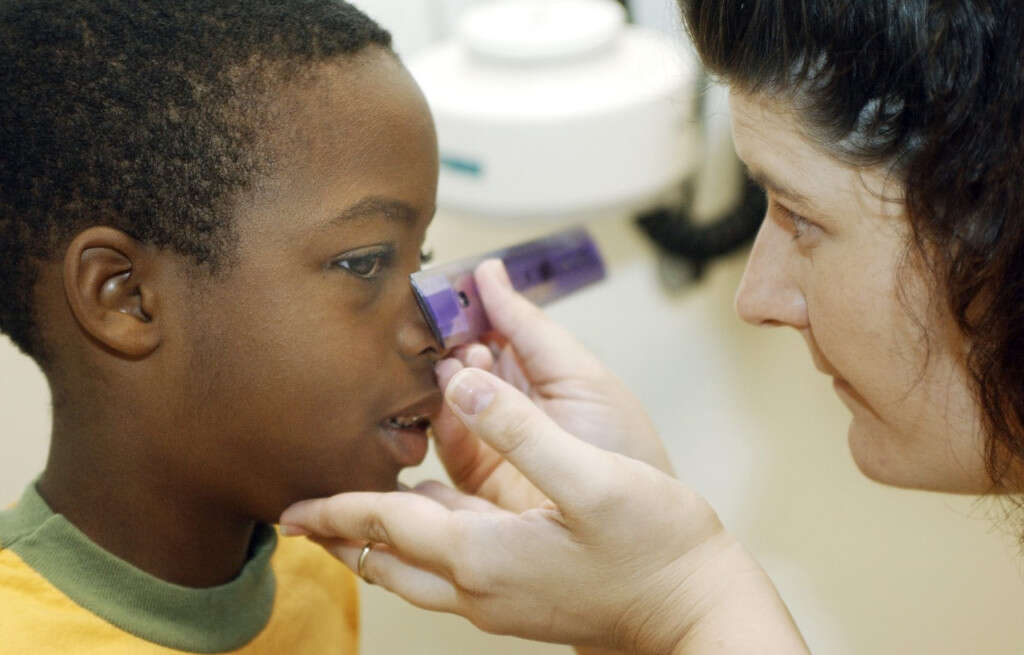10 Fetal Alcohol Syndrome Symptoms
Fetal alcohol syndrome is part of a group of syndromes known as fetal alcohol spectrum disorders. It occurs when a pregnant mother consumes alcohol. In fetal alcohol spectrum disorders, fetal alcohol syndrome is the most severe form of the condition. Other types include alcohol-related neurodevelopmental disorder, alcohol-related birth defects, and partial fetal alcohol syndrome.
In the United States, surveys have found that 20 to 30 percent of pregnant women drink alcohol at some point during pregnancy. It has been estimated that approximately 4.7 percent of North American pregnant women are alcoholics. The severity of the condition depends on the frequency and amount of alcohol consumed. Another important factor is the gestational age of the fetus during alcohol consumption. This condition is thought to happen as alcohol can cross the blood brain barrier and affect the developing baby. It is a preventable condition through avoiding alcohol consumption.
Although fetal alcohol syndrome is a permanent condition, supportive treatment can improve outcomes. Fetal alcohol spectrum disorder has been estimated to affect about 2 to 5 percent of those in the United States and Western Europe. In the United States, it is believed to occur in 0.2 to 9 per 1,000 live births.

Symptom #1: Intellectual Disability
Intellectual disability, also referred to as mental retardation, is a term describing generalized neurodevelopmental disorder where there is intellectual or adaptive functioning that is significantly impaired. By definition, it occurs when the intelligence quotient is under 70.
It usually begins to be noticeable in childhood and involves deficits in social skills, mental abilities, and activities of daily living when compared with peers of their own age. Early signs are the delay in achievement of milestones, difficulty with self-care skills, behavioral issues, poor problem-solving skills, difficulty adapting to new situations, and issues with following social rules.

Symptom #2: Characteristic Facial Features
Individuals with fetal alcohol syndrome have very characteristic facial features. The list includes short palpebral fissures, a long smooth philtrum, and a thin upper lip.
Other possible findings include ptosis of the eyelids, flat midface, upturned nose, flat nasal bridge, presence of epicanthal folds (skin fold where the upper eyelid covers the inner corner of the eye), clinodactyly (the curvature of a digit most commonly the little finger toward the fourth finger), “hockey stick” palmar creases, camptodactyly (permanently bent fingers usually involving the fifth finger), hirsutism, cardiac defects, and underdeveloped ears.

Symptom #3: Delayed Growth
In fetal alcohol syndrome, the prenatal and postnatal growth is usually delayed and slower compared to their peers. The consumption of alcohol during pregnancy can result in the inhabitation of prenatal growth that leads to babies that are small for gestational age.
The growth retardation usually results in height or weight that is below the tenth percentile for their age and race. Postnatally, there can be difficulties with feeding and low birth weight, which contributes to the delayed growth.

Symptom #4: Microcephaly
Microcephaly is a term describing the abnormal brain development that results in a smaller head compared to normal. It can be present at birth or develops after the first few years of life. Individuals with microcephaly often have intellectual disability, poor speech, abnormal facial features, poor motor function, dwarfism, and seizures. It can be defined as having a head circumference that is more than two standard deviations lesser than the mean for the average age and sex.
Although there is no specific treatment, the patient grows normally and develops normal intelligence in some cases. Besides fetal alcohol syndrome, microcephaly also occurs in Down syndrome, Patau syndrome, autosomal dominant microcephaly, and x-linked microcephaly.

Symptom #5: ADHD
ADHD or attention deficit hyperactive disorder is a condition where the patient has excessive activity, difficulty controlling behavior that is not appropriate for their age, and issues with paying attention. Although the symptoms of ADHD usually appear before the age of 12, there are also those who are undiagnosed until they reach adulthood.
In children with ADHD, issues paying attention during school can result in poor school performance. There is also an association with substance misuse and other mental disorders. However, it has been found that many children with ADHD have a good attention span for activities that they have interest in. ADHD is one of the CNS or neurobehavioral abnormalities that can be seen in those with fetal alcohol syndrome.

Symptom #6: Seizures
A seizure occurs when there is an abnormally excessive synchronous neuronal activity in the brain. It can cause uncontrolled shaking movements, loss of consciousness, shaking only involving a certain body part, memory loss, and more. These episodes usually last less than 2 minutes.
Seizures can be triggered by sleep deprivation, hypoglycemia, concussion, and alcohol withdrawal. In diseases of the brain where there is a long-term risk of more episodes of seizures, it is known as epilepsy. Seizures lasting more than 5 minutes are thought to be a medical emergency. Seizures may be present in individuals with fetal alcohol syndrome.

Symptom #7: Scoliosis
Scoliosis is a term that refers to a sideways curvature of the spine. Looking at the spine from the back, the spine will not appear to be straight. In mild cases or cases where the curvature has stabilized, treatment is generally not required.
Although the cause of scoliosis is usually unknown, it has been thought to be due to a combination of genetic and environmental factors. Scoliosis can occur in conditions such as cerebral palsy, neurofibromatosis, Marfan syndrome, and individuals with fetal alcohol syndrome. Severe cases may require bracing and surgery.

Symptom #8: Cleft Lip and Palate
In a cleft lip and palate, the opening of the upper lip or roof of the mouth has not fused properly resulting in an opening into the nose. It can result in speech problems, difficulty with feeding, ear infections, and hearing problems.
Since the fusion did not occur normally during development, it is known as a type of birth defect. It can occur due to drinking during pregnancy, having diabetes or being obese during pregnancy, and smoking or using medications during pregnancy. Prognosis is excellent with surgery. Proper dental care and speech therapy will be required.

Symptom #9: Hearing Loss
Hearing loss or impairment occur when there is partial or total loss of ability to hear. It may occur in one or both ears. It is important to recognize this issue among young children as hearing impairment or loss can significantly affect their ability to learn language.
In adults, it can lead to difficulties with work and social interaction. Hearing issues can be temporary or permanent. It can be caused by various factors such as continuous exposure to loud noises, genetics, infections, aging, trauma, and birth complications. Hearing loss can be seen among those with fetal alcohol syndrome. It can be managed through the use of hearing aids, cochlear implants, sign language, and lip reading.

Symptom #10: Refractive Issues
Refractive issues or vision problems are relatively common. They can generally be divided into farsightedness, nearsightedness, presbyopia, and astigmatism. Refraction refers to the bending of light when it passes through an object. Vision occurs when light is refracted when it passes through the lens and cornea, ultimately focusing on the retina.
Individuals with fetal alcohol syndrome may experience refractive issues such as myopia and astigmatism. Myopia or nearsightedness occurs when objects far away appear blurry while astigmatism occurs when the light does not focus evenly onto the retina. Both issues are easily corrected.











